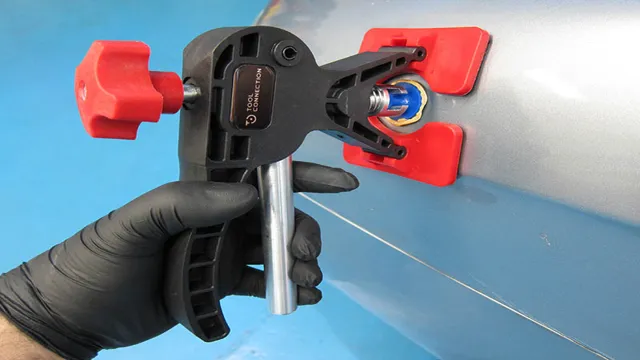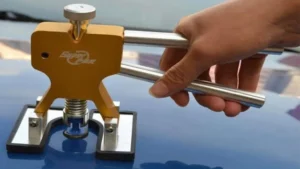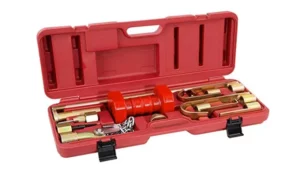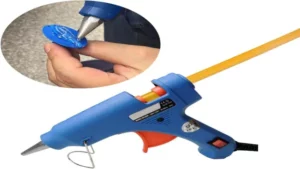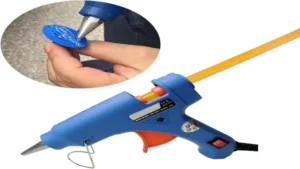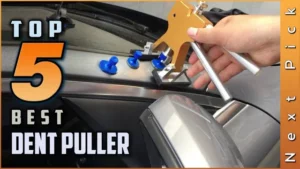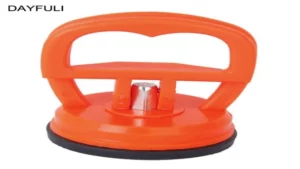Looking to fix a dent on your car at home? Dent pullers have become a popular DIY solution for car owners wanting to save money on costly repairs. However, to effectively use a dent puller, you need the best glue that will strongly adhere to the car’s surface without damaging the paint job. With so many options available, choosing the right glue can be overwhelming.
Don’t worry, though – in this blog, we’ll explore the best glue options for dent pullers so you can confidently tackle those pesky dents and restore your car’s smooth exterior.
Why Use Glue with a Dent Puller?
Dent pullers are great tools for removing dents from your car’s body. However, in order to achieve the best results, it is essential to use glue with your dent puller. The type of glue you use will depend on the type of material the body of your car is made of.
For example, if your car is made of plastic, you will need to use a different type of glue than if your car is made of metal. It is important to use the right type of glue to ensure the best possible hold between the dent puller and the body of your car. So, what glue should you use with your dent puller? A high-quality PDR glue is the best option, as it has the necessary strength and elasticity to hold the puller in place while you work on removing the dent.
Additionally, PDR glue is designed to be easy to remove and won’t damage your car’s paint job. By using the right glue with your dent puller, you can achieve professional-grade results and restore your car’s body to its original condition.
Creating a Strong Bond
If you’re trying to fix a dent in your car, you might be wondering why a dent puller needs glue. The truth is, using glue helps create a stronger bond between the puller and your car’s surface. Without glue, the dent puller’s suction cups might not create enough pressure to actually pull the dent out.
Plus, the glue helps distribute the puller’s force more evenly across the surface of the car, reducing the risk of any damage. It’s important to use the right kind of glue, though – one that’s strong enough to create a solid bond, but won’t damage the paint or leave any residue behind. So next time you’re fixing a dent in your car, remember that glue isn’t just an optional extra – it’s an essential part of the process.
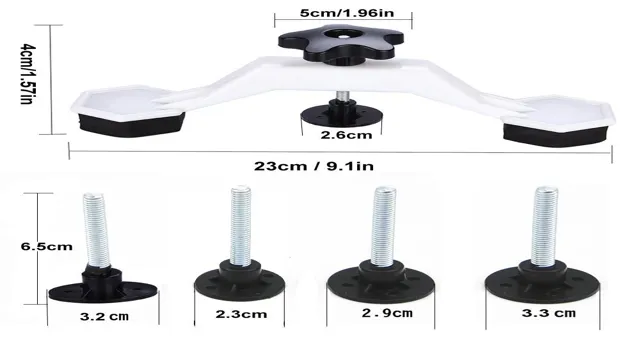
Cost-effective
When it comes to pulling out dents, using a glue with a dent puller can be a highly cost-effective solution. Not only does it provide a reliable and efficient method for removing dents, but it also eliminates the need for expensive tools or equipment. By applying glue to the damaged area and using a dent puller to pull it out, you can restore your vehicle to its original condition without spending a fortune.
Furthermore, glue-based dent pullers are easy to use and require minimal training, making it accessible even to the average consumer. The glue-based method also has the added benefit of being able to remove minor dents and creases on different types of surfaces, from metal to plastic. So, if you want a cost-effective solution for removing dents from your vehicle, using a glue with a dent puller is a viable option.
Types of Glue for Dent Pullers
Choosing the right glue is crucial when using a dent puller. There are various types of glue available, but not all of them work effectively with this tool. PDR glue, also known as paintless dent repair glue, is a popular option among professionals.
It’s designed specifically for this purpose and has a strong hold on metal surfaces without damaging the paint. Hot glue is another option, although it’s not as reliable as PDR glue. It can also damage the car’s finish if not used correctly.
Additionally, cold glue can be used for smaller dents and dings, although it’s not suitable for larger dents. Whatever glue you choose, make sure to follow the manufacturer’s instructions and use it in conjunction with the recommended dent puller for optimal results. Finally, remember to remove any residue or excess glue after completing the repair to ensure a smooth and flawless finish.
Hot Glue
Hot glue is a go-to adhesive for many dent pullers, as it provides a strong, durable hold and can bond to a variety of surfaces. There are two types of hot glue commonly used in dent pulling: PDR glue sticks and T-handles. PDR glue sticks are made specifically for paintless dent repair (PDR) and are designed to be used with glue guns.
They come in various sizes and strengths, so it’s essential to choose the right one for the job. T-handles, on the other hand, are pre-cut glue sticks that are easy to use and work well for smaller dents. They are a great option for those just starting with dent pulling and don’t want to invest in a glue gun yet.
When using hot glue, it’s important to remember to clean the surface thoroughly before applying the glue, and to keep the glue gun at a consistent temperature for optimal bonding. With the right type of hot glue and proper technique, dent pullers can achieve excellent results and restore vehicles to their original state.
Cold Glue
If you’re looking to perform paintless dent removal, you’ll need to have the right kind of glue for dent pullers. One of the most common types of glue used in this process is cold glue. This type of glue is great for small to medium-sized dents, and it’s often preferred by professional dent removers.
Cold glue is strong enough to hold the dent puller in place, but it’s also gentle enough not to damage the paint on your car. It’s important to note that there are different types of cold glue, and different brands will have varying levels of strength and tackiness. So, take time to research and find the right one for your specific needs.
Once applied, the cold glue must be allowed to dry before the dent puller can be attached. With the right cold glue, you can pull out dents quickly and efficiently while also protecting your car’s finish.
Two-part Epoxies
If you’re in the auto repair business, then you know how important it is to have the right tools and materials. One thing that every professional mechanic or DIYer needs is a good dent puller. Whether you’re working on a small dent or a larger one, having the right glue can make all the difference.
Two-part epoxies are a popular type of glue for dent pullers because they offer high strength and durability. These glues are formulated with two components that need to be mixed together before they can be used. Once applied, they bond quickly and can be sanded, drilled, or painted over to make the repair seamless.
Popular brands of two-part epoxies for dent pullers include J-B Weld, Loctite, and Gorilla Glue. When using these types of glues, it’s important to read the instructions carefully and use them as directed for the best results. With the right glue and technique, you can make professional-looking repairs quickly and easily.
How to Choose the Right Glue for Your Dent Puller
When it comes to using a dent puller, choosing the right glue is crucial. The most commonly used type of glue for dent removal is hot glue. This type of glue can grip onto the surface of the dent and hold the puller in place firmly.
However, not all hot glue is created equal, and using a low-quality glue can result in a weak bond and less effective dent removal. It’s important to choose a high-quality, industrial strength hot glue to ensure that your dent puller is effective. Additionally, it’s important to consider the material of the vehicle when choosing a glue.
For example, if you are working on a rubbery or textured surface, a specialized glue may be necessary. Ultimately, the key is to choose a glue that is strong enough to hold the puller in place, while also being compatible with the surface of the vehicle. By choosing the right glue, you can ensure that your dent removal process is successful and efficient.
Dent Puller Type
When it comes to choosing the right glue for your dent puller, there are a few things to keep in mind. First and foremost, consider the type of dent puller you’re using. There are a variety of dent pullers on the market, each with its own specific glue requirements.
For example, if you’re using a hot glue dent puller, you’ll need to use hot glue sticks. On the other hand, if you’re using a cold glue dent puller, you’ll need to use cold glue sticks. It’s important to match the glue type with the dent puller type to ensure optimal results.
Additionally, pay attention to the strength of the glue you’re using. While stronger glue may seem like the obvious choice, it’s important to consider the size and severity of the dent you’re trying to pull. A stronger glue may be necessary for larger dents, but for smaller dents, a weaker glue may be sufficient.
Remember to always follow the manufacturer’s instructions when it comes to glue type and application, and don’t be afraid to experiment to find the best glue for your specific dent pulling needs.
Glue Performance
When it comes to choosing the right glue for your dent puller, there are a few things to consider. One of the most important factors is glue performance. You want to make sure that the glue you choose is strong enough to hold the dent puller firmly in place, but not so strong that it damages the vehicle’s paint.
It’s also important to consider the temperature and humidity of your workspace, as these can affect the performance of the glue. A good rule of thumb is to choose a high-quality glue that is designed specifically for dent pulling, and to follow the manufacturer’s instructions carefully. By taking the time to choose the right glue for your dent puller, you can ensure that you get the best possible results every time you use it.
So don’t be afraid to experiment and try out different glues until you find the one that works best for you!
Work Environment
Choosing the right glue for your dent puller is crucial for getting the job done efficiently. There are different types of glues available in the market, and it’s essential to choose the one that suits your work environment. The work environment includes temperature, humidity, and the type of car you are working on.
For example, if you are working in a colder environment, you will need a glue that can withstand lower temperatures. Similarly, if you work in a high humidity environment, you need a glue that can handle moisture. It’s also essential to choose the glue that suits the type of car you are working on.
Different car paints have different spans of adhesiveness, and if you choose an incorrect glue, it can damage the paint. Therefore, it’s necessary to do your research before choosing the glue for your dent puller. By doing so, you can ensure that the glue you choose can handle the high-performance demands of your work environment and give you excellent results.
Conclusion
In conclusion, choosing the right glue for your dent puller is crucial to achieving a flawless finish on your car. A strong and reliable adhesive can pull out even the toughest dents, ensuring your vehicle looks good as new. So, don’t just stick with any old glue – do your research and pick the perfect product to ensure your car’s bodywork stays in tip-top condition.
“
FAQs
What type of glue do I need to use with a dent puller?
You should use a hot glue gun and high-strength glue sticks specifically designed for use with dent pullers.
Can any type of glue be used with a dent puller?
No, only hot glue that is compatible with dent pullers should be used as it is designed to withstand the pulling force without breaking or cracking.
How much glue should I apply to the dent before using the puller?
A pea-sized amount of glue should be applied to the center of the dent, avoiding the edges as it could cause the glue to seep out during the pulling process.
Is there a specific brand of glue recommended for dent pullers?
Yes, there are many high-strength glue sticks available that are specially formulated for use with dent pullers, such as Blackhawk, AWF Pro, and Super PDR.
Can I use regular hot glue for dent pulling?
No, regular hot glue is not strong enough to withstand the pulling force and can break or crack, causing further damage to the surface.
How long does the glue need to dry before I use the puller?
The glue should set and dry for 1-2 minutes before you use the puller, giving it enough time to bond to the surface and hold firmly.
Is it safe to use a dent puller with hot glue?
Yes, as long as the glue is properly set and dried, it will hold up to the pulling force and will not cause any damage to the surface.
